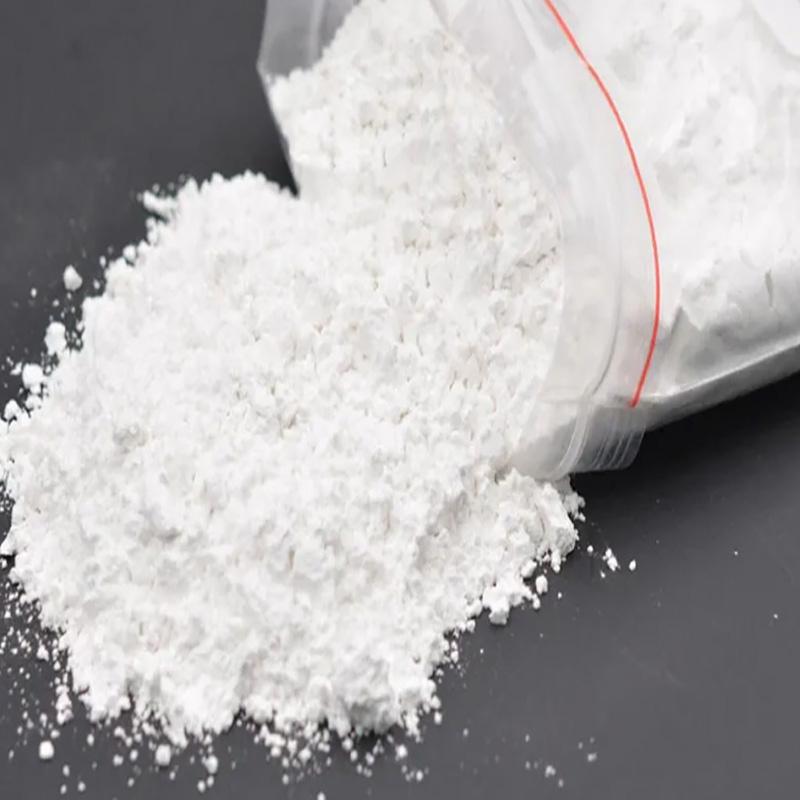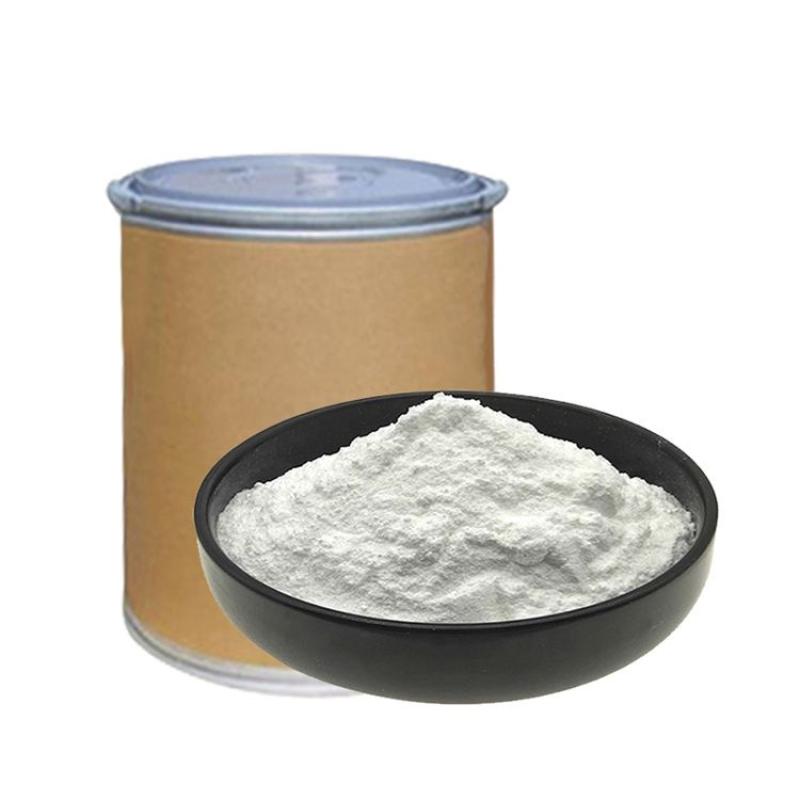Common name: GlufosinateChemical name: 2-Amino-4-[hydroxy(methylphosphonoyl)]butanoic acidMolecular formula: C5H18N3O4PStructural formula:Molecular weight: 215.19CAS No. : 77182-82-2Product description:Glufosinate-ammonium, also known as glufosinate, is a non-selective foliar spray of organophosphorus herbicide. It was first synthesized and developed by the Federal German Hoechst Chemical Company in 1979.
Contacta ahora
Glufosinate is a wide-spectrum herbicide that is used to govern essential weeds consisting of morning glories, hemp sesbania (sesbania bispinosa), pennsylvania smartweed (polygonum pensylvanicum) and yellow nutsedge just like glyphosate.
Contacta ahora
Usage:Systemic conduction broad-spectrum herbicide. It mainly inhibits the enol acetonyl shikimidin phosphate synthase in plants, thereby inhibiting the conversion of shikimate to phenylalanine, tyrosine and tryptophan, which interferes with protein synthesis and causes plant death. It was originally used in rubber plantations to control thatch and other weeds, which can make rubber trees tapped one year earlier and are produced by old rubber trees. It is now gradually spread to forestry, orchards, mulberry gardens, tea gardens, rice-wheat, rice and rapeseed rotation fields.
Contacta ahora
Common name: DifenoconazoleChemical name: 1-({2-[2-Chloro-4-(4-chlorophenoxy)phenyl]-4-methyl-1,3-dioxolan-2-yl}methyl)-1H-1,2,4-triazoleMolecular formula: C19H17Cl2N3O3Structural formula: Molecular weight: 406.26CAS No. : 119446-68-3Product description:Difenoconazole, also known as oxadifenazole, is a triazole fungicide and a sterol demethylation inhibitor. It has the characteristics of high efficiency, broad spectrum, low toxicity, and low dosage. An excellent variety of triazole fungicides with strong systemic properties.
Contacta ahora
Common name: Clodinafop-propargylChemical name:2-propynyl-(R)-2-[4-(5-chloro-3-fluoro-2-pyridyloxy)phenoxyl]-prpionateMolecular formula: C17H13ClFNO4Structural formula: Molecular weight: 349.74CAS No.
Contacta ahora
Common name: MCPAChemical name: (4-chloro-2-methylphenoxy)acetic acidMolecular formula: C9H9ClO3Structural formula: Molecular weight: 200.62CAS No. : 94-74-6Physical and chemical properties:The pure product is a white crystalline solid. m.p.118~119℃(120℃), solubility: ether 77g/100mL, ethanol 153g/100mL, n-hexane 0.5g/100mL, toluene 6.2g/100mL, xylene 4.9g/100mL, water 0.0825g/100mL. Industrial products m.p.99~107℃, smell of phenol.Usage:Hormone-based selective herbicides are easily absorbed and conducted by roots and leaves.
Contacta ahora
Structural formula:Molecular weight: 350.59CAS No. : 2921-88-2Product description:Chlorpyrifos (CPS), also known as Chlorpyrifos ethyl, is an organophosphate pesticide used on crops, animals, and buildings, and in other settings, to kill a number of pests, including insects and worms. It acts on the nervous systems of insects by inhibiting the acetylcholinesterase enzyme. Chlorpyrifos was patented in 1966 by Dow Chemical Company. Chlorpyrifos is considered moderately hazardous to humans by the World Health Organization based on its acute toxicity.
Contacta ahora
Product description:Prochloraz, also referred to as promethazine, promethazine, shibaoke, and prochloraz, is an imidazole enormous-spectrum pesticide fungicide, which acts via inhibiting the biosynthesis of sterols. even though it does not have a systemic effect, it has sure conductivity residences. it has apparent control impact on diverse plant life because of ascomycetes and semi-chemicalbook micro organism. it may moreover be mixed with most fungicides, insecticides, and herbicides, and has appropriate manage consequences.
Contacta ahora
Common name: AtrazineChemical name:2-Chloro-4-ethylamino-6-isopropylamino-1,3,5-triazine; 2-chloro-4-ethylamino-6-isopropylamino-s-triazine; Molecular formula: C8H14ClN5Structural formula:Molecular weight: 215.68CAS No. : 1912-24-9Physical and chemical properties:Atrazine is a colorless crystal with a melting point of 173~175°C. Dissolved in water, methanol and chloroform. It is stable in neutral, slightly acidic and slightly alkaline media, but alkali and inorganic acid can hydrolyze it into hydroxy derivatives without herbicidal activity at high temperature, and it is non-corrosive.
Contacta ahora
Common name: ametrynChemical name:N-ethyl-N’-(1-methylethyl)-6-(methylthio)-1,3,5-triazine-2,4-diamineMolecular formula: C9H17N5SStructural formula:Molecular weight: 227.33CAS No. : 834-12-8Physical and chemical properties:White crystalline solid. m.p. 80~84℃ (recrystallized in petroleum ether), density 1.19g/m3, vapor pressure 1.12×10-4Pa. The solubility is: acetone 500g/ChemicalbookL, methanol 450g/L, toluene 400g/L, water 18.5mg/L. It is stable in slightly acidic or slightly alkaline medium, and easily hydrolyzed in strong acid or strong alkaline medium.
Contacta ahora
Common name: Bispyribac-sodiumChemical name: 2,6-Bis((4,6-dimethoxy-2-pyrimidinyl)oxy)-benzoic acid sodium salt Molecular formula: C19H17N4NaO8Structural formula:Molecular weight: 452.35CAS No.
Contacta ahora
MF: C22H17N3O5MW: 403.39CAS: 131860-33-8 Physical and chemical properties:Density: 1.33 g/cm3Melting point: 118-119 ℃Boiling point: 581.3 ℃Flash: 305.3 ℃Appearance: white crystalline powderUsage :because of its prevention and cure of bacteria ester disease range is wide, suitable for wheat, corn, rice and other food crops, peanut, sesame, tobacco, cotton and other economic crops, tomato, watermelon, cucumber, eggplant, chili, vegetable crops, such as apple, pear, kiwi fruit, mango, litchi, longan, banana and other fruit trees, medicinal herbs, flowers, such as hundreds of crops.Its e
Contacta ahora
Common name: FenpropathrinChemical name: [cyano-(3-phenoxyphenyl)methyl] 2,2,3,3-tetramethylcyclopropane-1-carboxylateMolecular formula: C22H23NO3 Structural formula:Molecular weight: 349.42CAS No. : 39515-41-8 Product description:Fenpropathrin, or fenopropathrin, is a widely used pyrethroid insecticide in agriculture and household. Fenpropathrin is an ingestion and contact synthetic pyrethroid.
Contacta ahora
Product description:Kresoxim-methyl is a exceptionally powerful, wide-spectrum, new fungicide. it has an amazing control effect on strawberry powdery mold, melon powdery mold, cucumber powdery mould, pear scab and different sicknesses. it can manipulate and deal with maximum sicknesses inclusive of ascomycetes, basidiomycetes, deuteromycetes and oomycetes. it has a sturdy inhibitory effect at the germination of spores and the increase of mycelium in leaves, and has defensive, healing and removing activities.
Contacta ahora
Common name: AcetamipridChemical name: N-[(6-chloro-3-pyridyl)methyl]-N'-cyano-N-methyl-acetamidineMolecular formula: C10H11ClN4Structural formula:Molecular weight: 222.67CAS No. : 135410-20-7Physical and chemical properties:Acetamiprid raw drug is white crystal, content of more than 99%, melting point of 101 ~ 103.3℃, vapor pressure < 0.33×10-6Pa(25℃), slightly soluble in water, solubility in water is 4.2g/L, soluble in acetone, methanol, ethanol, dichloromethane, chloroform, acetonitrile, etc.
Contacta ahora
Common name: BETA-CYPERMETHRINChemical name: Cyano(3-phenoxyphenyl)methyl 3-(2,2-dichlorovinyl)-2,2-dimethylcyclopropanecarboxylateMF: C22H19Cl2NO3MW: 416.29716CAS: 86752-99-0Structural formula: Product description: Beta-cypermethrin is a pyrethroid pesticide, which is a kind of synthetic pesticide similar to natural pyrethrin in structure. Its molecule is composed of two parts: inulin and alcohol.Beta-cypermethrin is used to control agricultural pests by touching and gastric toxicity.
Contacta ahora
Product description:Internal carbamate insecticide, both pesticide and stomach toxicity, can successfully manipulate a ramification of pests and their larvae and eggs, the residual impact is brief. manipulate cotton bollworm, cotton miner moth, tobacco moth with 24% water spray 24-36ml /100m2. foliar spray also can be used to manipulate aphids, thrips, red spider, leaf roll worms, slime worms, and so on., and soil remedy to control nematodes and leaf pests. in 1966, it changed into first endorsed by way of du pont as insecticide and nematocide.
Contacta ahora
Thiamethoxam is a systemic insecticide in the class of neonicotinoids. It has a broad spectrum of activity against many types of insects. Thiamethoxam can be used as a seed dresser.Thiamethoxam is a broad-spectrum, systemic insecticide, which means it is absorbed quickly by plants and transported to all of its parts, including pollen, where it acts to deter insect feeding.[citation needed] An insect can absorb it in its stomach after feeding, or through direct contact, including through its tracheal system.
Contacta ahora
Common name: PymetrozineChemical name: (E)-4,5-Fihydro-6-methyl-4-((3-pyridinylmethylene)amino)-1,2,4-triazin-3(2H)-oneMolecular formula: C10H11N5OStructural formula:Molecular weight: 217.23CAS No. : 123312-89-0Product description:Pymetrozine belongs to the pyridine (pyridinethimide) or triazinone class of insecticides and is a non - cytocytic insecticide. Pymetrozine has a tactile effect on insect pests and internal absorption activity. In plants, it can transport in both xylem and phloem. Therefore, it can be used as foliar spray and soil treatment.
Contacta ahora
Product Description:Pymetrozine is a non - cellular insecticide belonging to pyridinethimide or triazinone pesticide. Pymetrozine has tactile and endogenic activity to pests. In vegetation, it may be transported in every xylem and phloem. Therefore, it can be used as a foliar spray and soil remediation agent. Due to its correct transfer properties, newly grown branches can also be effectively covered after spraying stems and leaves.Common name: PymetrozineChemical name: (E)-4,5-Fihydro-6-methyl-4-((3-pyridinylmethylene)amino)-1,2,4-triazin-3(2H)-oneMolecular form
Contacta ahora
Common name: FluroxypyrChemical name: 4-amino-3,5-dichloro-6-fluoro-2-pyridyloxyacetic acidMolecular formula: C7H5Cl2FN2O3Structural formula:Molecular weight: 255.03CAS No. : 69377-81-7 Product description:Fluroxypyr is an organic heterocyclic selective systemic and conductive post-emergence herbicide. Its general name is fluroxypyr, and other names include Zhipinling. It is suitable for the control of wheat, barley, corn and other gramineous crops. Various broad-leaved weeds.
Contacta ahora
Common name: TriclopyrChemical name: [(3,5,6-trichloropyridin-2-yl)oxy]acetic acidMolecular formula: C7H4Cl3NO3Structural formula:Molecular weight: 256.47CAS No. : 55335-06-3Physical and chemical properties:The pure product is a white crystalline solid. m.p.148~150℃, decomposition temperature 290℃. The vapor pressure is 1.68×10-4Pa. It is soluble in organic solvents such as ethanol, and its solubility in water at 25°C is 430~440mg/L.
Contacta ahora
Common name: AvermectinChemical name:abamectin (combination of avermectin B1a and avermectin B1b) Molecular formula: C49H74O14Structural formula: Molecular weight: 887.11CAS No. : 71751-41-2Product description:It can kill mites and insects, but not eggs. The mechanism of action is different from the general insecticide is to interfere with neurophysiological activities, stimulate the release of γ -aminobutyric acid, and aminobutyric acid on arthropod nerve conduction inhibition.
Contacta ahora
Thiamethoxam is a extensive-spectrum, systemic insecticide, which means that it's miles absorbed speedy with the resource of plant life and transported to all of its components, which includes pollen, in which it acts to discourage insect feeding.[citation needed] an insect can absorb it in its belly after feeding, or via direct contact, which includes thru its tracheal device.
Contacta ahora


































